Yes, you read that correctly. AutoBlogGreen has released news that a company called Red Light Racing has installed Volkswagen's 1.2 litre, 3-cylinder Pumpe Düse TDI in a first-generation Honda Insight and the net result is 80mpg in US gallons - a staggering 96mpg imperial.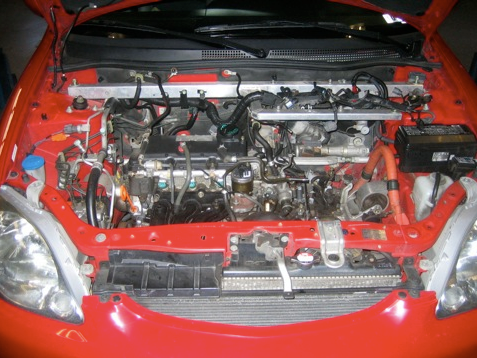 The engine has been taken from Volkswagen's Lupo 3L, a model that was only available in mainland Europe and itself made 94mpg imperial, equivalent to 3 litres/100km. The Lupo however was solely diesel-powered - and Red Light Racing state that they haven't even hooked up the Insight's hybrid motor to the diesel unit yet and once they do there could be another 15-20% improvement.
The engine has been taken from Volkswagen's Lupo 3L, a model that was only available in mainland Europe and itself made 94mpg imperial, equivalent to 3 litres/100km. The Lupo however was solely diesel-powered - and Red Light Racing state that they haven't even hooked up the Insight's hybrid motor to the diesel unit yet and once they do there could be another 15-20% improvement. The Lupo 3L was highly modified from the standard Lupo TDI - like the Insight, it used aluminium in much of its construction, and also in common with the Insight it used low rolling-resistance tyres and a stop-start function to save fuel when stopped in traffic. The engine produces 61bhp and makes 140Nm of torque, which is 9bhp less than the Insight's 1.0 litre petrol IMA unit but a useful 27Nm more torque. Coincidentally, both Lupo 3L and Insight weigh in the region of 850kg, so the engine seems ideal for use in the Insight, though according to Red Light Racing the installation naturally wasn't too straightforward.
The Lupo 3L was highly modified from the standard Lupo TDI - like the Insight, it used aluminium in much of its construction, and also in common with the Insight it used low rolling-resistance tyres and a stop-start function to save fuel when stopped in traffic. The engine produces 61bhp and makes 140Nm of torque, which is 9bhp less than the Insight's 1.0 litre petrol IMA unit but a useful 27Nm more torque. Coincidentally, both Lupo 3L and Insight weigh in the region of 850kg, so the engine seems ideal for use in the Insight, though according to Red Light Racing the installation naturally wasn't too straightforward.
Diesel clatter aside, the new engine should provide very pleasant driving characteristics too. The final quote goes to Red Light Racing, clearly a company after Tarmac's heart: "The main idea was to take existing hardware, hack it, and make a vehicle that could be produced by major manufacturers or individuals that would deliver tremendous fuel economy without a tremendous leap in technology. I believe we succeeded."
Wednesday, September 29, 2010
80mpg from diesel-powered first-gen Insight
Posted by dwi safitri at 5:26 PM 0 comments
Labels: diesel, eco, fuel economy, honda, hybrid, insight, lupo, volkswagen
2011 Lamborghini Super Sport Cars Lamborghini Gallardo LP570-4 Blancpain Edition





Posted by dwi safitri at 9:46 AM 0 comments
Labels: 2011, Lamborghini, Sport Cars
Tuesday, September 28, 2010
Guerilla marketing for Alfa MiTo; New Multiair MiTo
Take a walk through Jesmond in Newcastle-upon-Tyne at the moment and your eyes might be drawn towards the pavement. Normally, it's nothing particularly special, but recently some rather unorthodox adverts for Alfa's MINI rival, the MiTo, have appeared on some of the paving slabs.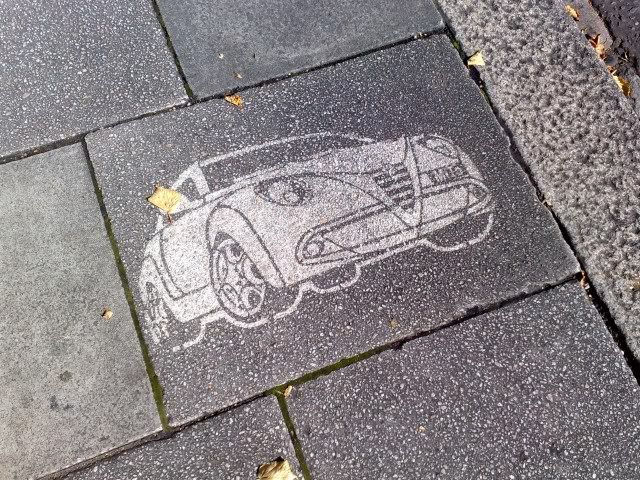 With Alfa's baby being aimed at the younger and more fashion-conscious types, these adverts in the affluent and student-heavy area of Jesmond are a great example of guerilla marketing. The images are created using a technique that involves cleaning an sandblasting the ground through a template. There are apparently 1300 similar adverts across the UK.
With Alfa's baby being aimed at the younger and more fashion-conscious types, these adverts in the affluent and student-heavy area of Jesmond are a great example of guerilla marketing. The images are created using a technique that involves cleaning an sandblasting the ground through a template. There are apparently 1300 similar adverts across the UK.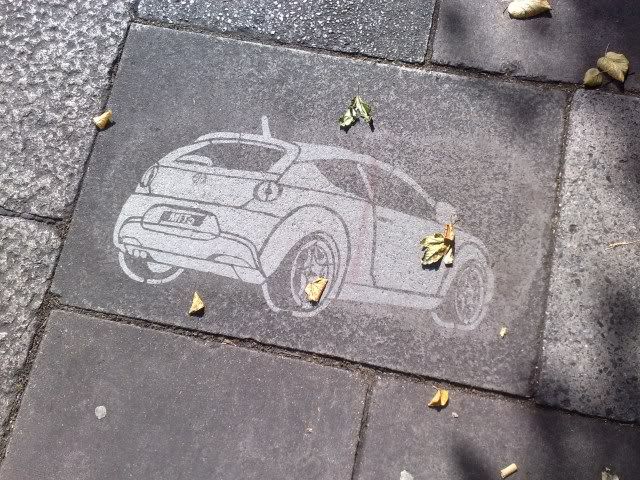 The pavement adverts also coincide with a first look, via What Car?, at the new MiTo Multiair, an ultra-clean and efficient MiTo using advanced 1.4 petrol engines. Instead of a conventional camshaft, the MultiAir engine uses a series of oil-fed solenoids which can precisely meter out fuel in any given situation. As well as improving economy by 10% and reducing NOx emissions by 60%, the system apparently improves throttle response and increases power and torque, especially at lower revs.
The pavement adverts also coincide with a first look, via What Car?, at the new MiTo Multiair, an ultra-clean and efficient MiTo using advanced 1.4 petrol engines. Instead of a conventional camshaft, the MultiAir engine uses a series of oil-fed solenoids which can precisely meter out fuel in any given situation. As well as improving economy by 10% and reducing NOx emissions by 60%, the system apparently improves throttle response and increases power and torque, especially at lower revs.

 (Picture credits: Alfa Romeo and Tarmac)
(Picture credits: Alfa Romeo and Tarmac)Posted by dwi safitri at 4:07 PM 0 comments
Labels: alfa romeo, clean, eco, fuel economy, guerilla, marketing, mito, motoring, multiair
Monday, September 27, 2010
2012 Maserati Sport Cars GranTurismo MC Stradale




Posted by dwi safitri at 9:58 AM 0 comments
Labels: 2012, Maserati, Sport Cars
Volkswagen 1-litre concept one step closer
News arrives via AutoBlogGreen that Volkswagen's 1-litre concept is still under development and nearing production reality.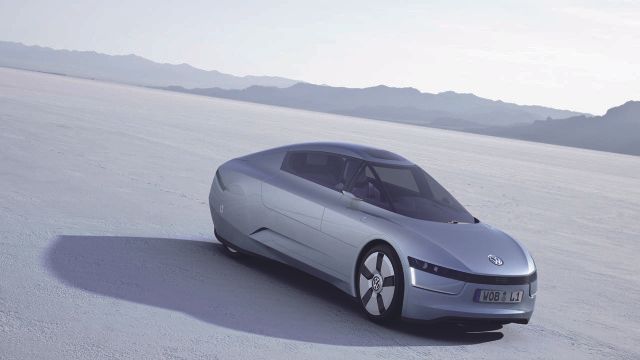 The concept, now being named the L1, will be on display at the upcoming Frankfurt Motor Show and Volkswagen have released more details about the car and the engine that will be powering it in a press release that you can read in full on ABG's page.
The concept, now being named the L1, will be on display at the upcoming Frankfurt Motor Show and Volkswagen have released more details about the car and the engine that will be powering it in a press release that you can read in full on ABG's page.
The 1L has a 0.8 litre TDI developed from Volkswagen's new 1.6 TDI that makes its debut in the new Golf and Passat BlueMotion. Along with automatic stop-start, a 0.195 coefficient of drag and thanks to an all-in weight of only 380kg, the 1L is claimed to sip one US gallon of fuel every 170 miles, or 204mpg imperial (and only 36 grammes per kilometer of CO2). This works out at a little over the original 1l/100km that Volkswagen claimed, though I'm sure owners wouldn't complain as the eventual figure is still only 1.38 litres per 100km. Thanks to the light weight and slippery shape, the 1L also manages 100mph.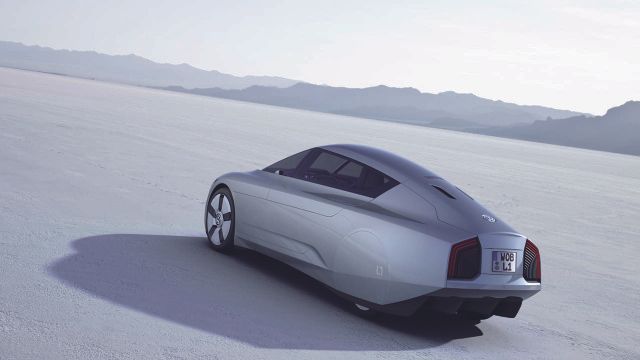 Volkswagen are now giving the car a tentative 2013 release date. Should give you time to save up...
Volkswagen are now giving the car a tentative 2013 release date. Should give you time to save up...
Posted by dwi safitri at 3:50 AM 0 comments
Labels: bluemotion, CO2, concept, diesel, frankfurt, microcar, motor show, volkswagen
Sunday, September 26, 2010
Peugeot Sport Cars Epine Concept Cars Inspired by Formula One and Motorcycles




Posted by dwi safitri at 7:34 PM 0 comments
Labels: Concept Car, Hybrid Car, Peugeot, Sport Cars
Most frugal car in the real world? Autocar finds out with a race...
Manufacturers make big claims about their fuel economy figures. Occasionally, even these claims can be bettered, as Toyota's now closed blog for the iQ managed back in January, extracting 72mpg when Toyota themselves only claimed 65mpg. Often though, real-world driving prevents us from extracting the optimum economy from our cars.
Autocar's test then perhaps sheds a little more relevance on achieving high miles to the gallon. Armed with a Ford Fiesta Econetic, a Vauxhall Corsa Ecoflex, an Insight, a Prius, a BMW 116d and a Smart ForTwo CDi, they each hit the track at Bruntingthorpe with a single litre of fuel and a driver trying to achieve as many miles in the hour as possible. By working to distance rather than outright economy, it avoided the whole race becoming a slow eco-trundle.
The most efficient at the end of the hour? Ford's Fiesta Econetic. It achieved almost sixty miles at the hands of Matt Prior, equivalent - unsurprisingly - to roughly 60mpg. A little way short of Ford's 76mpg combined figure perhaps, but much more representative of what drivers can expect in their daily grind, and a long way from shabby.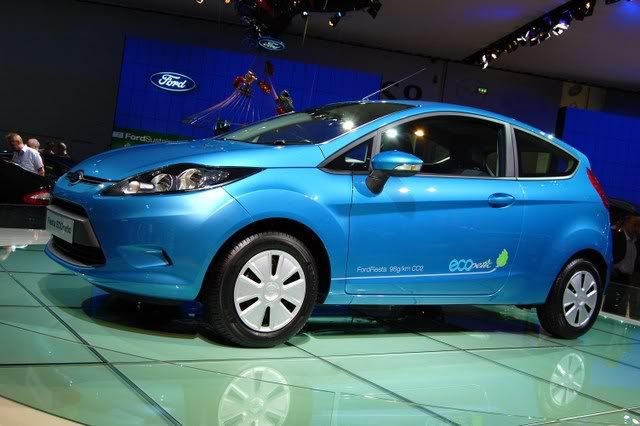 The other cars in the test all managed to average around 55mpg, including the diminutive Smart despite being driven pedal-to-the-metal until it spluttered to a halt after 53 minutes.
The other cars in the test all managed to average around 55mpg, including the diminutive Smart despite being driven pedal-to-the-metal until it spluttered to a halt after 53 minutes.
The full story can be found in the 30th September issue of Autocar, out now. Alternatively, you can watch the video:
New Cars 2011 Porsche 911 Carrera GTS
 As standard, the Porsche 911 Carrera GTS has a six-speed manual gearbox and the seven-speed Porsche Doppelkupplungsgetriebe (PDK), is available as an option. Compared Carrera S. The upper speed GTS with manual transmission increases 2mph to 190 mph. In general, the acceleration from zero to 62mph is improving, 0.1 seconds; for GTS Coupé with PDK and Sport Chrono Package Plus Sport Plus mode, the source sprint takes only 4.2 seconds.
As standard, the Porsche 911 Carrera GTS has a six-speed manual gearbox and the seven-speed Porsche Doppelkupplungsgetriebe (PDK), is available as an option. Compared Carrera S. The upper speed GTS with manual transmission increases 2mph to 190 mph. In general, the acceleration from zero to 62mph is improving, 0.1 seconds; for GTS Coupé with PDK and Sport Chrono Package Plus Sport Plus mode, the source sprint takes only 4.2 seconds.
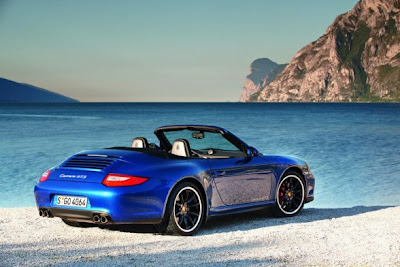 Special attention was paid to charge exchange in the 3.8-litre flat engine delivering 408 hp: In a special resonance intake manifold, six vacuum-controlled tuning flaps switch between power- and torque-optimized geometry whereas in a Carrera S power unit there is only one tuning flap. Thus, maximum torque of unchanged 420 Nm is already available at 4,200 rpm, 200 rpm earlier compared with the Carrera S. Add to that a sports exhaust system with two dual tailpipes. Their outer shells are painted in black and their inner tubes are polished on the outside and nano-coated.
Special attention was paid to charge exchange in the 3.8-litre flat engine delivering 408 hp: In a special resonance intake manifold, six vacuum-controlled tuning flaps switch between power- and torque-optimized geometry whereas in a Carrera S power unit there is only one tuning flap. Thus, maximum torque of unchanged 420 Nm is already available at 4,200 rpm, 200 rpm earlier compared with the Carrera S. Add to that a sports exhaust system with two dual tailpipes. Their outer shells are painted in black and their inner tubes are polished on the outside and nano-coated.Unique within the 911 Carrera family, the GTS combines the 44 millimetre wider body of the all-wheel drive Carrera 4 models – including widened rear track – with a classic rear-wheel drive configuration. The Porsche 911 Carrera GTS sits on 19-inch centre-locking RS Spyder alloy wheels, painted in black with high-gloss finished rims, with 235/35 ZR 19 tyres on the front axle and 305/30 ZR 19 tyres on the rear. Further features include the SportDesign front apron with spoiler edge painted in black, special side skirts also in black, and the Carrera GTS logotype on doors and rear lid, in black or silver depending on the body colour. The area between the two tailpipes on the rear apron is also finished in black.
The new Porsche 911 Carrera GTS will have its global debut at the 2010 Paris Motor Show on October 2 and goes on sale in the UK in December, priced from £76,758 for the Coupe and £83,493 for the Cabriolet.
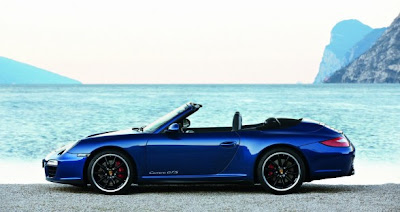

Posted by dwi safitri at 4:49 AM 0 comments
Labels: Cabriolet, Coupe, new porsche 911, paris motor show, porsche, Porsche 911, porsche 911 carrera, Porsche 911 Carrera GTS
Friday, September 24, 2010
The future of motor racing?... Or are we already there?
Since man invented the motor car, his primal instinct for excitement and speed has always compelled him to race it against the next man's motor car.
Never before though has there been such pressure for our favourite method of transportation to become less polluting and less energy consuming. The effects can already be seen in many race series where economical diesel race cars have been competing and indeed winning for years now, and where many motorsports are aiming to cut costs and cut their carbon emissions as they travel around the globe. Even in the high octane world of motor racing, every little helps.
But what if we look further into the future? One man, Moritz Martin, has done just that with his concept for the futuristic 1 Liter Racing League. The concept is Mr Martin's degree project and is apparently inspired by "the insanity of Swamp Buggy, Land Speed Record races and the Eco Marathon". The idea is to use tactics and skill to finish the race on just a single litre of fuel. The driver's cause is aided by being able to skim the car across thin layers of water and other varied surfaces to use as little energy in movement as possible. The car can be aided in sliding by rear-wheel mounted air nozzles for "frictionless steering".
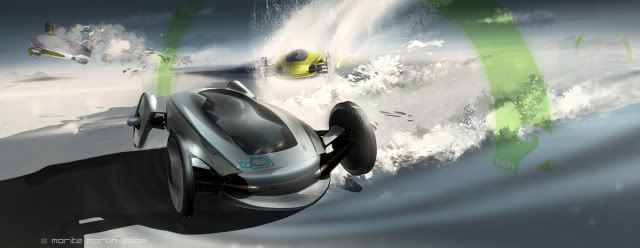
 (Images: Moritz Martin)
(Images: Moritz Martin)It's a facinating concept, and one that looks a lot of fun. However... what if you want to take part in some eco-friendly racing here, and now? Your options are clearly a little limited - after all, motor racing is hardly the most eco-friendly sport in the world. That isn't to say though that it isn't possible - if you look hard enough.
 (Image: Speedhunters.com)
(Image: Speedhunters.com)If you live in Japan, you've probably come across this already. Kei-Jidosha are Japan's answer to overcrowding on the roads, and thanks to their minimal proportions and even more miniscule engines (660cc and 63bhp is the current maximum limit), they're the perfect choice for low-consumption racing. There are series for Keis both old and newer, and of course you could always take one to an autocross event like this Daihatsu Copen on YouTube, where small proportions and low inertia do wonders for cornering ability.
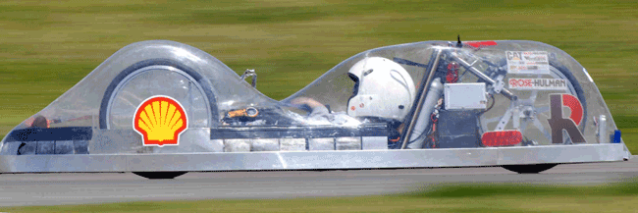 (Image: Thinkorthwim.com)
(Image: Thinkorthwim.com)Events like the Shell Eco Marathon are growing in popularity all the time and the records for miserly fuel consumption tumble quicker than the times at a 100m race with Usain Bolt. The current World Record is a mind-boggling average of 10,705mpg, achieved by team Microjoule in 2003. Of course - these aren't really "cars" so much as tiny engines in composite cigars with a driver filling the rest of the available space - but it's still a race of sorts and like the 1 Liter Racing League aims to use as little fuel as possible over a set distance. And you can certainly do the race on a small budget too, even if the top teams spend a little more to achieve the figures they do. You could turn up with a lawnmower-powered soapbox racer if you wanted.
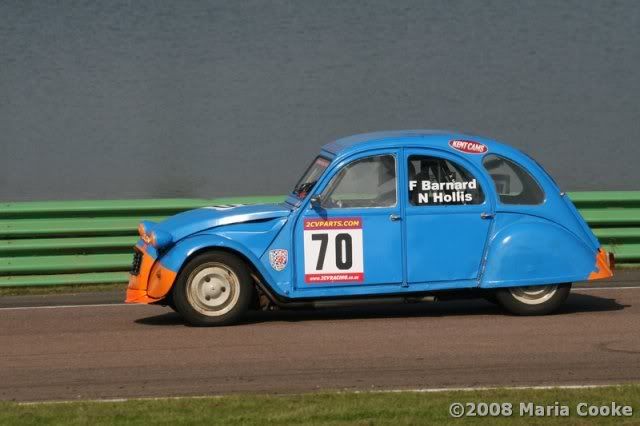 (Image: Maria Cooke @ 2cvracing.co.uk)
(Image: Maria Cooke @ 2cvracing.co.uk)Perhaps a bit of a wild card, but even so, people do race the tree-hugger's wheels of choice and there are thriving race series for the little cars all over Europe - the UK Classic 2CV Racing Club has been around for over 20 years! The cars are cheap to buy, prepare and run, and with the weight of a feather in a helium updraught even the modest power from a tiny 600cc engine is able to provide plenty of fun without using a lot of fuel in the process. It's probably one of the cheapest and most economical circuit racing series in the World.
Okay - so none of the above are quite as high-tech as Mr Martin's concept, but they prove that even today you can take part in motor racing that doesn't break the bank, and doesn't pray too heavily on your environmental conscience...
Posted by dwi safitri at 2:36 PM 0 comments
Labels: 1 liter, 1 liter racing league, 1l, 2cv, budget, cheap, citroen, concept, eco, eco marathon, fuel economy, kei, moritz martin, motorsport, racing, shell, volkswagen
Thursday, September 23, 2010
2010 Lotus Sports Cars Elite Concept Cars




Posted by dwi safitri at 11:43 PM 0 comments
Labels: 2010, Concept Car, lotus, Sport Cars
Wednesday, September 22, 2010
2010 Caterham Sport Cars Seven Roadsport 125 Monaco




Posted by dwi safitri at 2:11 PM 0 comments
Labels: 2010, Caterham, sports car
Tuesday, September 21, 2010
2010 Citroen Lacoste Concept Cars The Car of The Future





 .
.
Posted by dwi safitri at 12:28 PM 0 comments
Labels: 2010, Citroën, Concept Car

















